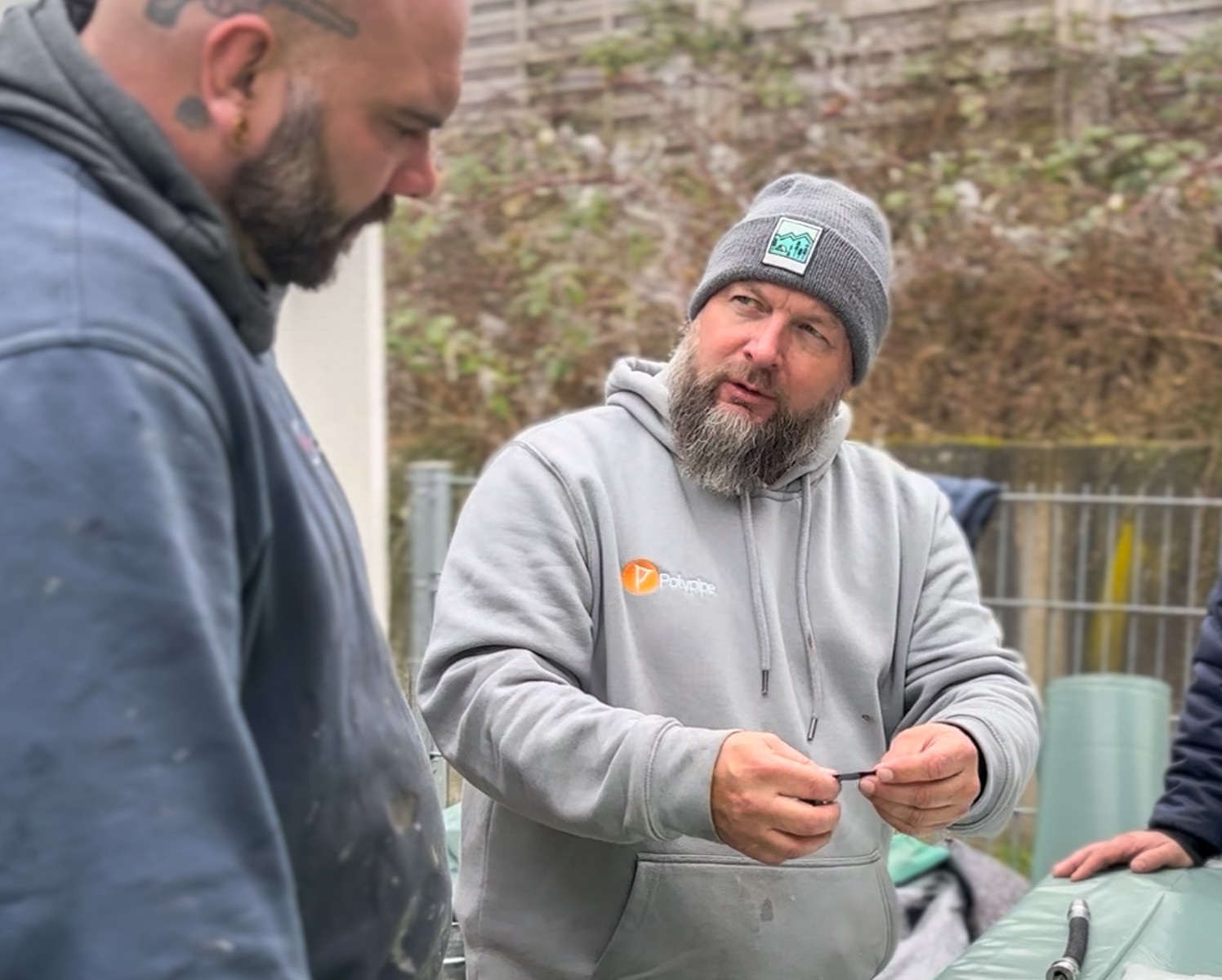
When you think of construction sites, you usually think of excavators, noise and torn-up roads. But there is another way - invisible, efficient and highly precise. This is the world of trenchless pipe rehabilitation! A technique that combines expertise and high-tech. Particularly impressive: cap rehabilitation. It is one of the supreme disciplines of modern rehabilitation methods.
Pipelines that run underground are subject to constant stress tests. The connection points are particularly critical here: Branches, nozzles and transitions from the house connection to the main sewer. Especially under the floor slab, where many of these sensitive connections run, minor damage can have major consequences - for example if dirty water escapes or even parts of the building are undermined.
And this is exactly where cap rehabilitation comes into play. It is always used when conventional methods reach their limits - in the case of leaking nozzles, dilapidated branches or as a supplement to inliner renovation.
First comes the inspection camera - a special inspection unit that is inserted deep into the pipe system. This detects even the smallest damage. If a problem is discovered, the preparation begins: the damaged area is roughened using the latest technology so that the sleeve later adheres optimally to the inside of the pipe.
Then comes the actual centrepiece: a connecting sleeve soaked in resin - the so-called ‘cap’ - is placed precisely at the damaged area using a packer. The packer is then inflated with air pressure. It presses the cap firmly against the inside of the pipe, where it then hardens. The result: an absolutely tight connection without the need for a single trench.

Cap rehabilitation and short liner rehabilitation is not only efficient, but also extremely time-saving: the damage is repaired within a few hours. Above all, however, this method ensures that no more backflow can occur - an often underestimated risk with damaged inlet pipes.
Regardless of whether it is a house connection or a main sewer: nozzles and branches in nominal sizes DN 100 to DN 700 can be reliably rehabilitated. And the best thing is that all lateral inlets can be sealed with just one single construction site - minimum effort, maximum effect.
Our sewer professionals Marcus and Marcel accompanied the company WSL during a cap rehabilitation - directly on site and right in the middle of the action. They were there from the first camera shot to the last move and show impressively what modern renovation looks like today.
Take a look and see how precision and technology work together underground to make old pipes future-proof again. 📹
Hütchensanierung: Polypipe meets Wieland Schultz Latz GmbH